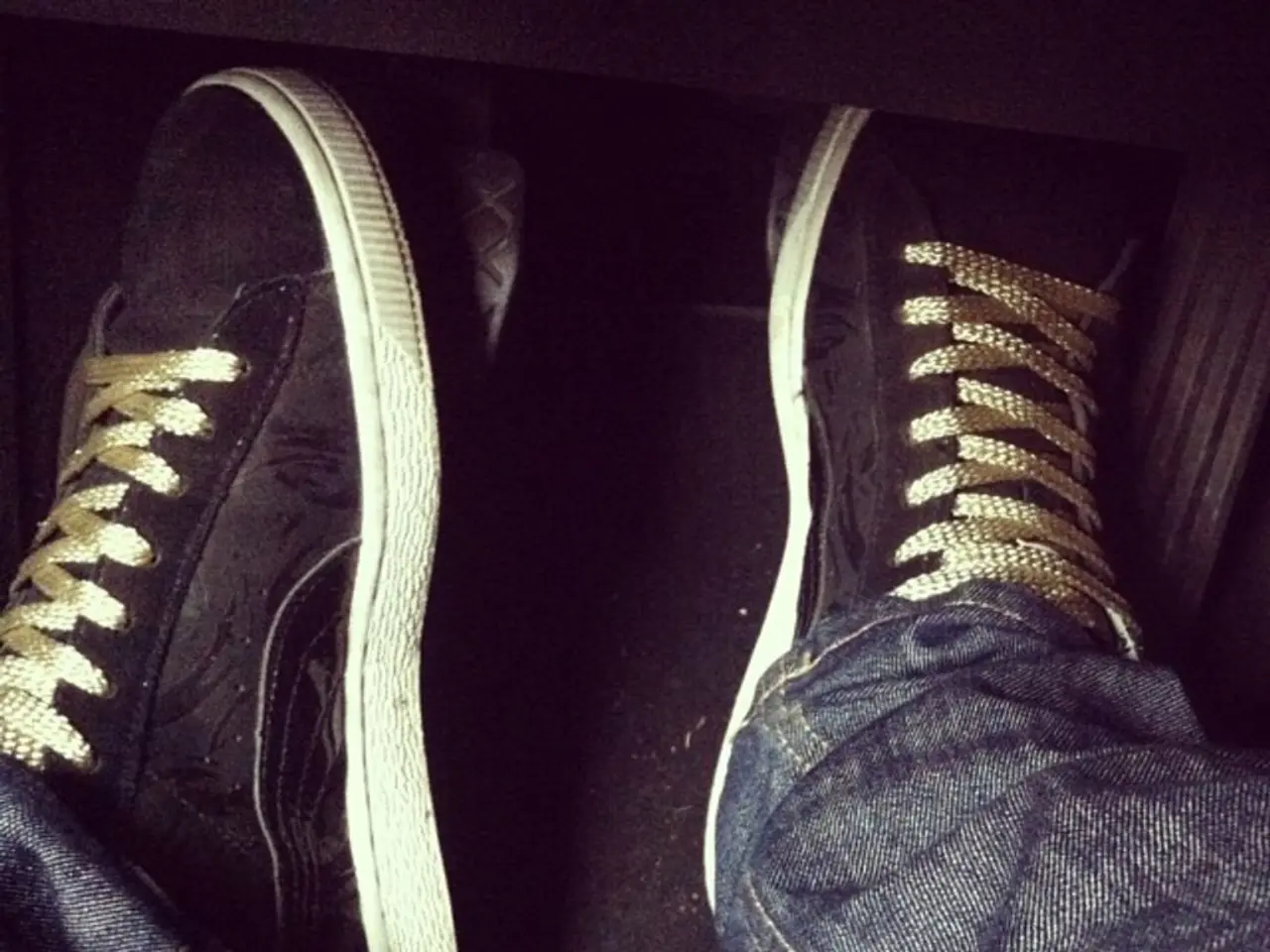Foot pain and inflammation caused by rheumatoid arthritis: Signs and possible remedies
Rheumatoid arthritis (RA) is a chronic, progressive condition that affects approximately 1% of the world's population, primarily targeting females three times more than males. This article aims to provide a clear understanding of the symptoms and body parts affected by RA.
Rheumatoid arthritis causes inflammation in the lining of joints, damaging cartilage and potentially destroying affected joints. In more than 90% of people with RA, symptoms occur in the ankle and foot, with signs of toe and ball of foot involvement including bunions, pain under the ball of the foot, a claw-like deformity of the toes, and bumps that turn into calluses.
The small joints of the hands, wrists, and feet are the most commonly affected areas. Symptoms in these areas generally include pain and tenderness, swelling and visible inflammation, joints feeling warm or red due to inflammation, stiffness, especially in the morning or after periods of inactivity, reduced range of motion, and over time, joint deformities and weaker joints that affect grip strength and fine motor tasks in the hands.
Hands and fingers may also experience pain, swelling, morning stiffness, reduced grip strength, possible deformities, and difficulty with fine motor skills. The wrists, in addition to the hands, carry a significant risk (about 30%) of carpal tunnel syndrome caused by inflammation compressing the median nerve, leading to pain, numbness, and weakness in the hands.
In the feet and toes, pain, swelling, stiffness, and difficulty walking and standing are common. Over time, the alignment of bones in the heel may shift and cause a flatfoot deformity. As the disease progresses, larger joints such as the knees, elbows, ankles, and shoulders may also be involved, experiencing pain, swelling, and stiffness.
Besides joint symptoms, RA can also cause systemic symptoms like fatigue, weakness, low-grade fever, loss of appetite and weight, and muscle aches because it affects the immune system and multiple organ systems.
In summary, RA most commonly affects the small joints of the hands, wrists, and feet bilaterally, causing pain, swelling, warmth, stiffness (especially in the morning), and reduced motion. Larger joints and systemic symptoms may appear as the disease advances. If you suspect you may have RA, it is essential to consult a healthcare professional for a proper diagnosis and treatment plan.
- Rheumatoid arthritis (RA) can lead to other joint pain, not just in the feet and hands, as it may progress to affect larger joints such as the knees, elbows, ankles, and shoulders.
- A clear understanding of medical conditions, including rheumatic fever and chronic diseases like RA, is crucial in maintaining overall health-and-wellness, especially because RA can cause systematic symptoms such as fatigue, fever, and muscle aches.
- In addition to the symptoms in the feet and toes like pain, swelling, and difficulty walking, RA can also affect the wrists, a significant risk for carpal tunnel syndrome due to inflammation compressing the median nerve, leading to pain, numbness, and weakness in the hands.
- Fitness-and-exercise routines, which help promote overall health and well-being, may need to be adjusted for individuals with rheumatoid arthritis because the inflammation can cause joint pain, stiffness, and reduced range of motion.




